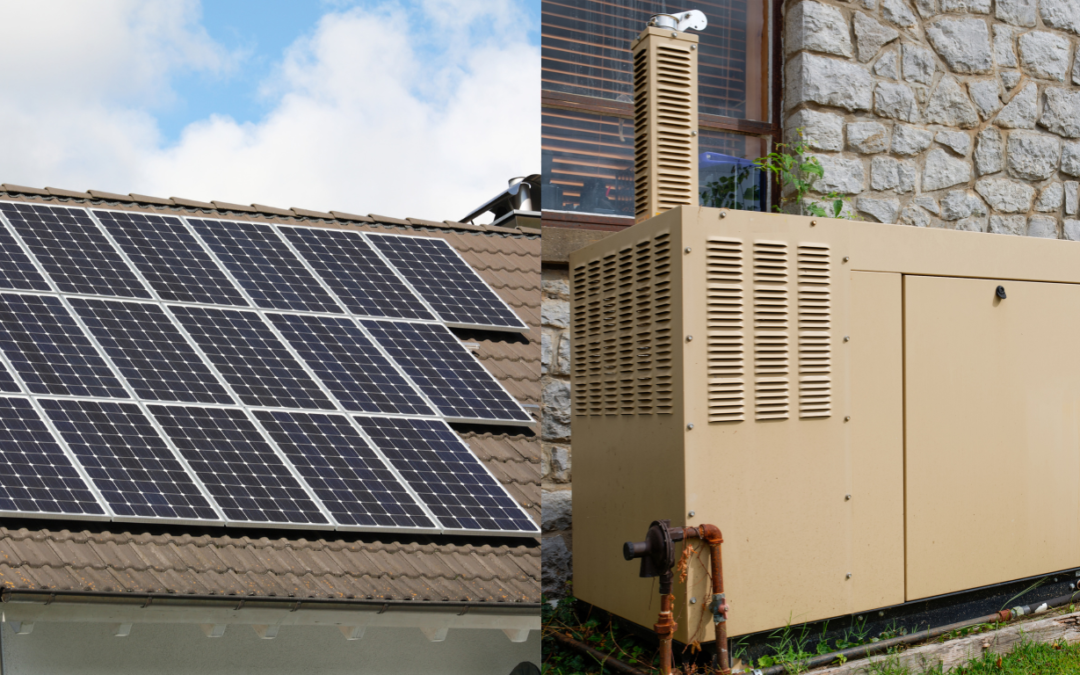By Mohammad Alkhatib
In the United States, the need for reliable backup power solutions is increasing due to frequent power outages and natural disasters. Solar storage systems and traditional generators are two prominent options for ensuring continuous power supply during outages. This report provides a comprehensive comparison of these two solutions, analyzing their pros and cons, feasibility, and market trends to help homeowners and businesses make informed decisions.
Solar Storage Systems
Pros: Solar storage systems offer several advantages. Environmentally, they produce no emissions, significantly reducing the carbon footprint compared to traditional generators. Users can store excess solar energy generated during the day for use at night or during outages, enhancing energy independence. Over time, solar storage can lead to substantial cost savings on energy bills, and these systems generally require less maintenance compared to generators. Additionally, solar storage systems operate silently, avoiding noise pollution.
Cons: Despite these benefits, solar storage systems come with some drawbacks. The most notable is the high initial cost, as they require a significant upfront investment for solar panels and storage batteries. Their efficiency can also be affected by weather conditions and geographic location. Furthermore, the energy capacity of solar storage is limited, which may not be sufficient for extended outages.
Feasibility (Price Analysis): The initial investment for solar storage systems, including costs for solar panels, inverters, and batteries, ranges from $8,500 to $10,000 per unit for systems like the Tesla Powerwall 2. However, federal and state incentives, tax credits, and rebates are available for solar installations, which can significantly reduce the overall cost. Over the system’s lifespan, users can expect long-term savings due to reduced utility bills.
Market Trends: The market for solar storage is growing rapidly, driven by increasing adoption rates and technological advancements. Leading companies in the industry include Tesla, LG Chem, Sonnen, Panasonic, and Enphase.
Generators
Pros: Generators provide immediate power during outages and are capable of supplying power for longer periods and larger loads. They have lower initial costs compared to solar storage systems and are relatively easy to purchase and install. Many generators are portable, allowing for flexible usage in different locations.
Cons: However, generators have several disadvantages. They typically run on fossil fuels, producing emissions and contributing to environmental pollution. Generators require a continuous supply of fuel, which can be expensive and logistically challenging. They are also noisy and require regular maintenance and fuel management.
Feasibility (Price Analysis): Generators are generally more affordable upfront, with costs ranging from $1,000 for portable models to $7,000 for whole-house models. However, they involve ongoing operational expenses for fuel and maintenance. The reliability of generators can vary based on fuel availability, especially during extended outages.
Market Trends: The generator market is sizeable and expected to grow, with innovations focusing on improving efficiency and reducing environmental impact.
Comparison and Conclusion
Suitability: Solar storage systems are ideal for environmentally conscious users with long-term savings goals. They provide a sustainable energy solution but come with higher initial costs and limited energy capacity. Generators, on the other hand, are suitable for those needing immediate, high-output power regardless of environmental impact. They are more affordable upfront but have higher long-term operational costs due to fuel and maintenance needs.
Cost-Benefit Analysis: Over time, solar storage systems offer better long-term savings despite higher initial investments, thanks to reduced energy bills and available incentives. Generators, while cheaper initially, incur ongoing costs that can add up over time.
Future Outlook: The future of backup power solutions is likely to see a shift towards more sustainable options like solar storage, driven by increasing environmental awareness and technological advancements. This shift is expected to be bolstered by government incentives and the rising costs of fossil fuels.
References
- Brentley, A. (2024, August 19). Solar battery backup vs. generators. GreenLancer.
- Sunnova. (2024, July 12). A home backup generator or solar battery? Sunnova.
- U.S. Department of Energy. (2021, November 22). Should I Get Battery Storage for My Solar Energy System? Energy.gov.
- BloombergNEF. (2023, March 21). 1H 2023 Energy Storage Market Outlook. BloombergNEF.

